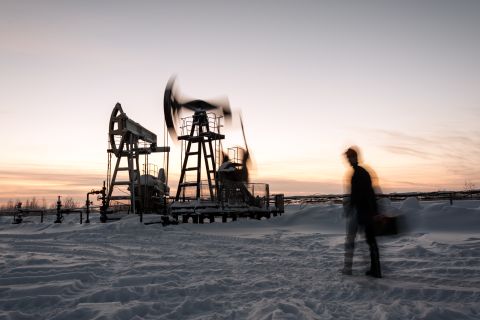Cabot Oil & Gas Corp., Houston, (NYSE: COG) reports an Eagle Ford well is producing at 334 barrels of oil and 142,000 cubic feet of gas per day for total of approximately 358 barrels of oil equivalent per day.
The well is Cabot’s first completed well in the play, and was a 3,000-foot lateral with a 14-stage frac.
Cabot chairman, president and chief executive Dan Dinges says, “This production rate is consistent with recently announced competitor wells in the area and is still strengthening. We like our acreage position and are encouraged by what we are seeing.”
Four more wells are planned this year. Cabot has nearly 52,000 net acres in the Eagle Ford.
Cabot also completed its third horizontal Cotton Valley Taylor Sand well in Texas with an initial production rate of 11.1 million cubic feet per day with pressure at 2,425 pounds per quare inch.
Dinges says, "The estimated recovery of our recent wells in this area ranges between six to seven Bcfe.”
In the Marcellus play, Cabot turned into line 13 wells including eight horizontals and five verticals. The 30-day production rates, some of which were restricted, on the horizontal wells range from 2.2 to 14.7 million cubic feet per day, with an average of 8 million cubic feet per day.
Dinges says, “As indicated, the production from several of these wells reflects restricted rates because we are at maximum capacity at our Teel station. To remedy this, our Lathrop compression station is scheduled to commence its initial start-up operations next month. We have been free flowing roughly 15- to 18 million cubic feet per day through this facility, and we still have approximately 50 frac stages completed and waiting to be turned in line once the compressors start running.”
He adds, “In anticipation of the additional volumes, we have added three firm transportation agreements to ensure our physical takeaway capacity keeps up with the increasing production levels. These agreements add a minimum of 100 million cubic feet per day of firm capacity.”
Cabot has interests in the Gulf Coast, the Rocky Mountains and the Midcontinent.
Recommended Reading
CNOOC Encounters High Yield Well in Beibu Gulf
2024-07-23 - CNOOC’s well was tested to produce over 1,000 cu. m/d of oil equivalent, making it the first well of such productivity in the Wushi Sag area.
Industry Consolidation Reshapes List of Top 100 Private Producers in the Lower 48
2024-06-24 - Public-private M&A brings new players to top slots in private operators list.
The EPC Market Keeps Its Head Above Water
2024-08-06 - While offshore investments are rising, particularly in deepwater fields, challenges persist due to project delays and inflation, according to Westwood analysis.
Patterson-UTI Boosts Bottom Line with OFS Acquisitions
2024-08-06 - Less than a year out from the closing of its merger with NexTier and its acquisition of Ulterra Drilling Technologies, Patterson-UTI is taking strides not to be the latest has-been.
As Oil Production Scales the Heights, Texas E&P Jobs Disappear —TXOGA
2024-08-06 - As operational efficiencies give E&Ps the ability to produce more oil with fewer rigs, Texas employment in the oil patch has fallen five out of the first six months of 2024.





